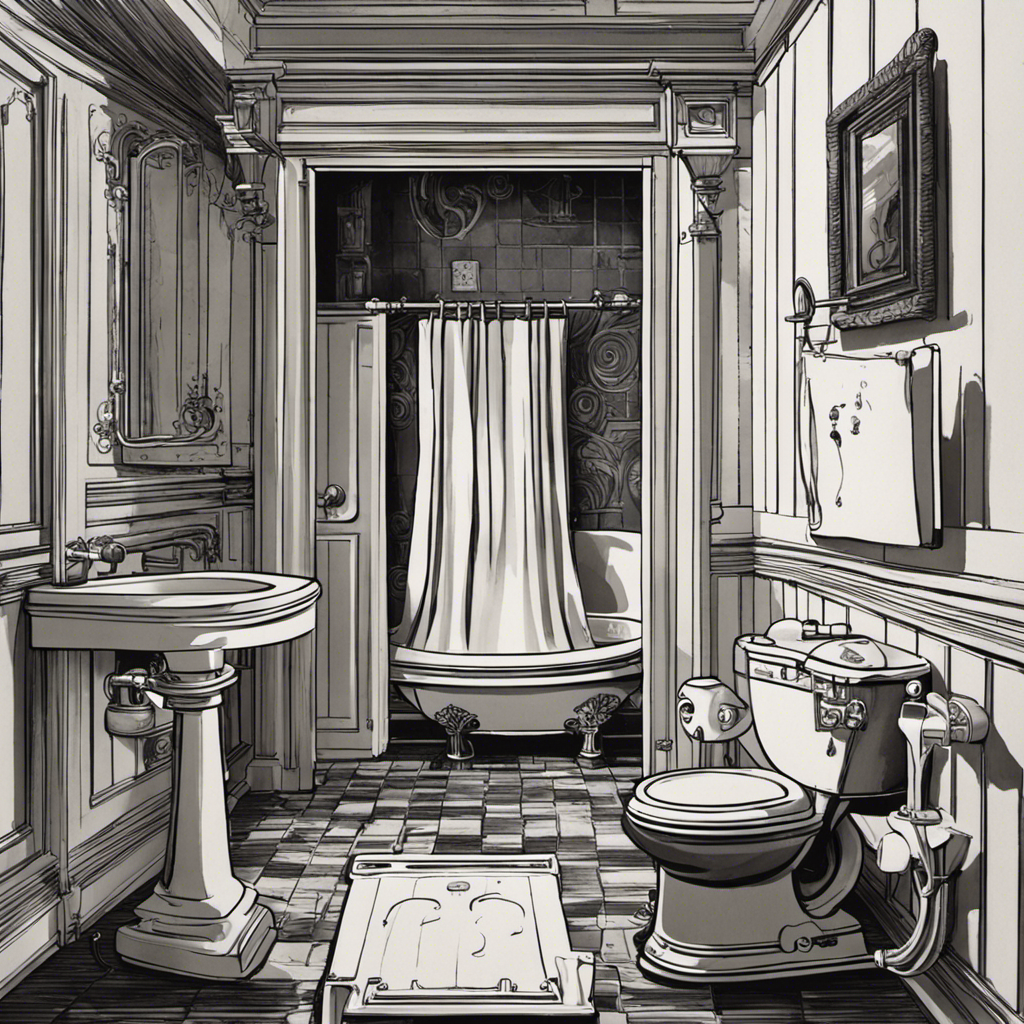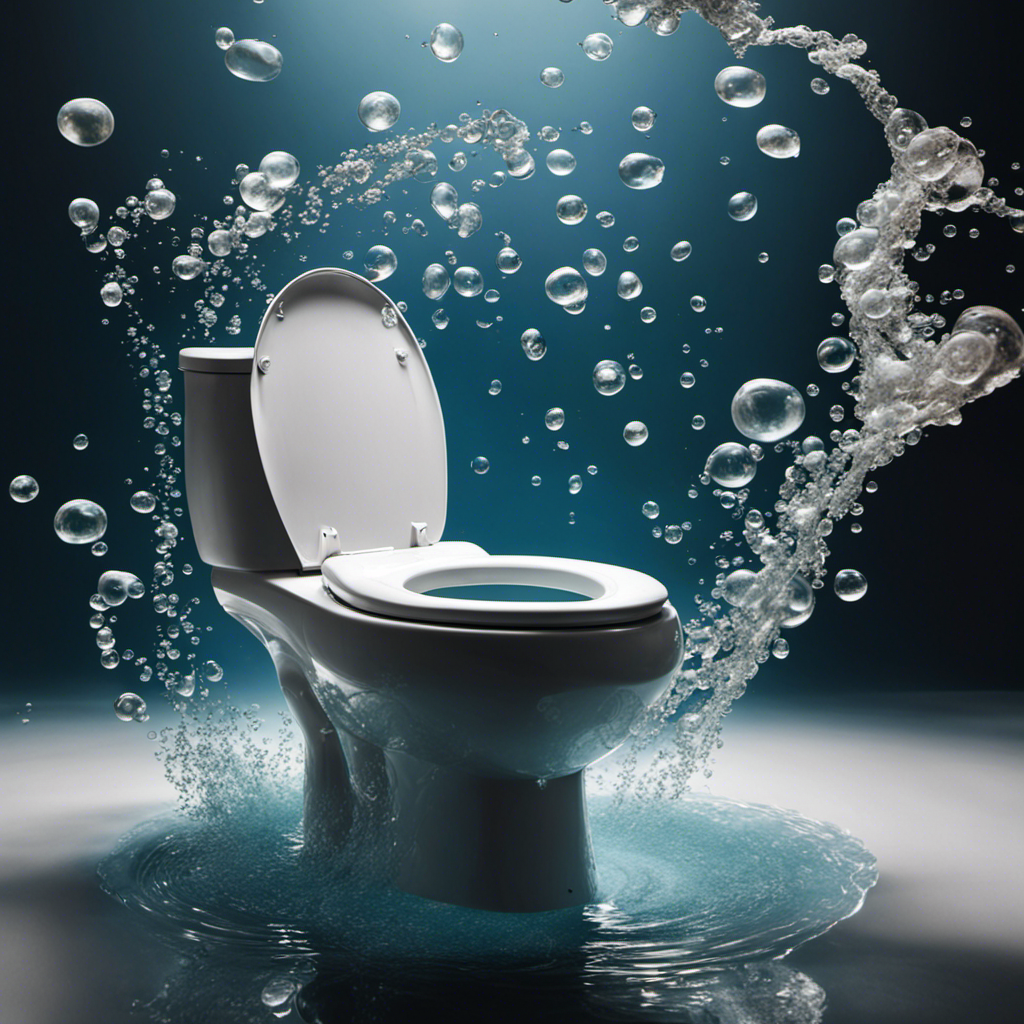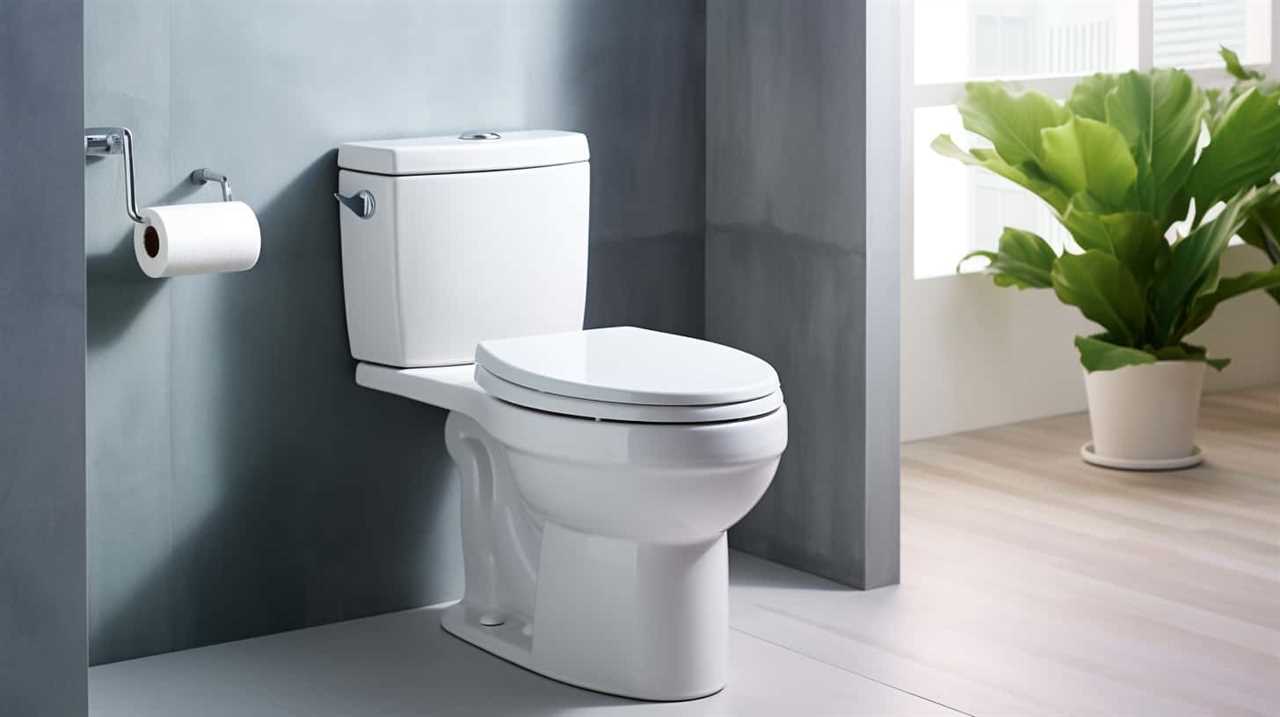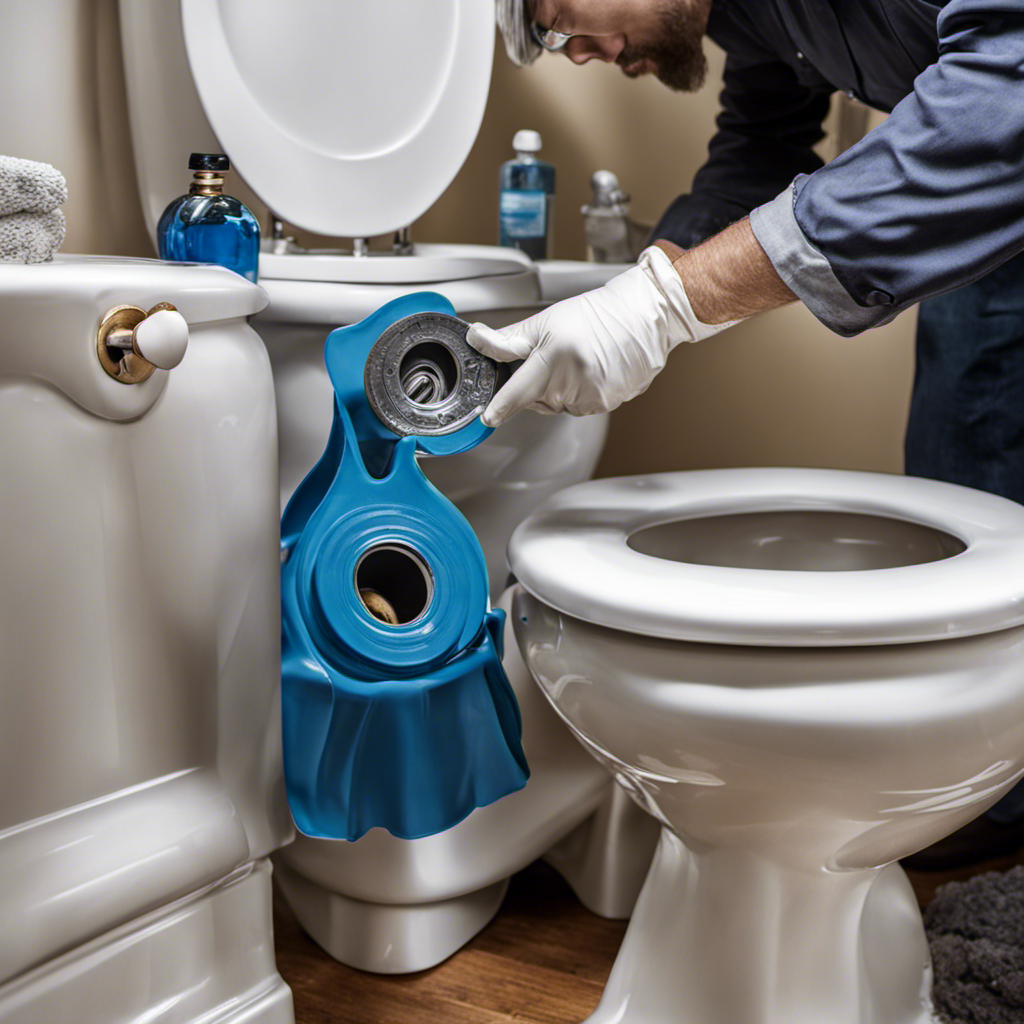As I sit on my porcelain throne, I can’t help but wonder, why does my toilet whistle when I flush it? It’s an annoying and perplexing problem that many homeowners face.
In this article, we will explore the common causes of toilet whistling, delve into the mechanics behind it, and provide practical solutions to identify and fix the issue.
So, if you’re tired of that high-pitched symphony every time you flush, keep reading to learn how to silence your whistling toilet once and for all.
Key Takeaways
- Whistling toilets can be caused by faulty or worn-out fill valves that regulate water flow into the tank.
- High water pressure from the rapid flow of water through pipes can lead to whistling sounds and potential pipe damage.
- Water pressure impacting the toilet and vibrations in pipes and fittings can contribute to the whistle sound.
- Checking water pressure, adjusting the fill valve, and ensuring proper maintenance can help prevent and fix toilet whistling issues.
Common Causes of Whistling Toilets
One common cause of toilets whistling when flushed is a faulty fill valve. The fill valve is responsible for regulating the flow of water into the toilet tank. When it becomes damaged or worn out, it can cause the water to rush into the tank too quickly, resulting in high water pressure.
This increased pressure can cause the water to flow rapidly through the pipes, creating a whistling sound. It is important to address this issue promptly, as whistling toilets can pose dangers. High water pressure can put stress on the pipes and fittings, leading to leaks or even burst pipes. Additionally, the constant whistling noise can be irritating and disruptive.
To prevent these issues, it is recommended to have the faulty fill valve replaced by a professional plumber.
Understanding the Mechanics of Toilet Whistling
Understanding the mechanics of why a toilet whistles when it’s flushed can help identify the underlying issue.
The whistle sound that occurs during flushing is often a result of the impact of water pressure on the toilet. When you flush a toilet, water rushes from the tank into the bowl, creating a powerful force. If the water pressure is too high, it can cause vibrations in the pipes and fittings, leading to the whistle sound.
Additionally, certain factors like a partially closed valve or a faulty fill valve can also contribute to the whistling noise.
To address this issue, it is important to regulate the water pressure by adjusting the fill valve or installing a pressure-reducing valve.
Regular maintenance and inspection of the toilet’s components can help prevent any potential issues that may lead to the whistle sound.
How to Identify and Fix a Whistling Toilet
To identify and fix a whistling toilet, you can start by checking the water pressure and adjusting the fill valve if necessary.
When a toilet makes a high-pitched whistle sound after flushing, it can be a sign of a problem with the water pressure or the fill valve.
First, check the water pressure in your home. If it’s too high, it can cause the toilet to whistle. You can use a water pressure gauge to measure the pressure and adjust it if needed.
Next, inspect the fill valve. This is the mechanism that controls the water flow into the toilet tank. If it’s not functioning properly, it can create a whistling sound. Adjust the fill valve by following the manufacturer’s instructions or consult a professional plumber if needed.
Preventative Measures to Avoid Toilet Whistling
If you want to prevent your toilet from making a whistling sound, you should regularly check the water pressure and adjust the fill valve if necessary. Maintaining your toilet is essential to avoid any future issues.
Here are some troubleshooting tips to help you with toilet maintenance:
-
Check the water pressure:
-
Ensure the water pressure is within the recommended range. High water pressure can cause whistling sounds.
-
Use a pressure gauge to measure the water pressure and adjust it accordingly.
-
Inspect the fill valve:
-
Make sure the fill valve is functioning properly. If it is damaged or worn out, it may cause whistling noises.
-
Replace the fill valve if necessary.
When to Seek Professional Help for Whistling Toilets
When it comes to whistling toilets, it may be necessary to seek professional help if the issue persists despite attempts at troubleshooting. While there are DIY solutions for whistling toilets, there are certain signs that indicate a more serious problem.
If you notice water leaking around the base of the toilet, an unusually high water bill, or if the toilet continues to whistle even after adjusting the water level, it is time to call in a professional plumber. These signs could indicate issues with the fill valve, flush valve, or even a cracked toilet bowl.
Attempting to fix these problems on your own could lead to further damage, resulting in costly repairs. So, when in doubt, it is always better to leave it to the experts.
Conclusion
In conclusion, it’s important to address a whistling toilet promptly to avoid potential damage and further complications.
By understanding the common causes and mechanics behind this issue, homeowners can easily identify and fix the problem themselves.
Implementing preventative measures, such as adjusting the water pressure or replacing faulty parts, can also help prevent toilet whistling in the future.
However, if the problem persists or if there is uncertainty in resolving it, seeking professional help is recommended, just like a mechanic examining a car’s engine.










